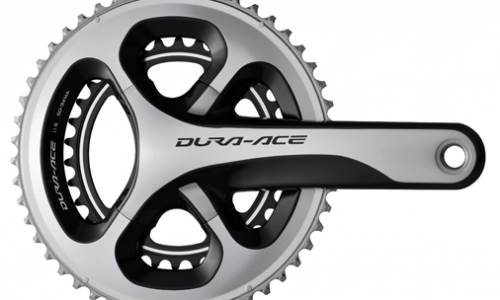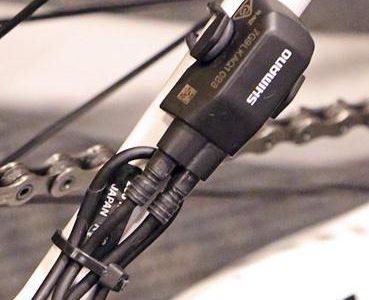Bikes come in all shapes and sizes, and that is what makes picking one very exciting. Each bike frame will give you advantages and disadvantages depending on its design. In the past decade, we are seeing companies go crazy with radical designs and embracing change well.
A great example is gravel bikes. They are completely different in how they look and their geometry, giving them certain characteristics when being ridden. A question commonly asked about a bike’s geometry is whether you should buy a bike with a horizontal top tube or sloped.
This article will explain the difference between the two, so you know what to expect.
What is a top tube?
A top tube is the part of your bike frame which sits between your legs. In the past, it used to be the difference between a woman’s and a man’s bike depending on how high it was. Now companies are using it to change bike characteristics depending on its angle.
Horizontal Top Tubes
If you’re looking for a bike with a horizontal top tube, the first place to look is on road racing bikes. Typically the classic bikes which were used in previous editions of the Tour de France. The horizontal top tube has many advantages, but modern bikes are typically coming away from this design.
Advantages of a Horizontal Top Tube
Aerodynamics
Horizontal top tubes are very aerodynamic. In cycling, we speak a lot about marginal gains, and aerodynamics make a huge difference. A horizontal top tube creates less drag and improves the way the bike cuts through the wind.
Frame Space
Having a horizontal top tube means the triangle of the frame is much larger. This is great if you are planning on carrying more. You can fit larger bottles and bigger bikepacking bags, which do make it much easier.
Classic Looks
Another thing about a horizontal top tube is that it makes the bike look incredible. It gives a bike clean lines and generally an amazing retro look which many people seek.
Disadvantages of a Horizontal Top Tube
Frames Require more sizes
The first disadvantage of a horizontal top tube is that it’s much harder to size a bike correctly for a user. This means there’s less flexibility when it comes to adjustments. More sizes are required to be made by manufacturers, and it can mean supply is harder.
Heavier
If you use a horizontal top tube, the bike frame needs to be larger to accommodate it, because of this, the tubes are much longer, and the frame is heavier.
Stiffer Seat Post
As I mentioned before, a horizontal top tube requires a larger frame. This, in turn, makes the Seatpost much shorter. A shorter seat post provides less flexibility and can make the bike less comfortable.
Less Agile
Having a larger frame with a horizontal top tube does make the bike more restricting and less agile. Typically if you are looking for a bike that has the ability to move around, it will have a sloping top tube.
Sloped Top Tubes
If you’re looking for a bike with a sloping top tube, then you’re going to find them on gravel and hardtail mountain bikes. We are seeing more bikes come out with sloped top tubes because they have many advantages compared to horizontal top tubes.
Advantages of a Horizontal Top Tube
Control
Sloped top tubes give the bike a lot more ability. If you look at off-road bikes, you will see they all typically have sloped top tubes. It gives the bike a much lower down weight. It means you can move your body around the bike more than a horizontal top tube and helps with stability.
Lighter
A bike with a sloping top tube is generally lighter because it requires less tubing than a bike with a horizontal top tube, providing they are made from the same material. The weight of a frame goes a long way to making a bike much faster.
Strength
Another thing about a sloped top tube is that because of the smaller triangle, it holds more strength but has less flexibility. This is vital when it comes to bikes designed to go off-road and take a lot of abuse.
Stand Over Height
With a sloped top tube, you get the advantage of it being much easier to get on and off the bike. The smaller frame even allows for a huge amount of accessories, such as dropper posts and suspension seat posts which you wouldn’t be able to fit on a frame with a horizontal top tube.
Fewer Sizes
With a smaller frame, you have the ability to adjust the bike much more. This means companies can make fewer sizes of a bike because they can fit more riders. This is great for the supply chain and also means the secondhand market is better.
Disadvantages of a Sloped Top Tube
Less Frame Space
When it comes to using a sloped top tube, you have to sacrifice the frame space you have available. Unfortunately, this means less space for bottles and bikepacking bags, and you do have to get creative when adventure cycling.
Less Aerodynamic
When it comes to sloping top tubes, they do create more drag when you’re riding. Although this is only a marginal difference, it’s worth mentioning.
Much more stress on the seat tube and collar
Although typically, a smaller frame is stronger, it does put a huge amount of stress on the seat collar, and the design has to be good to compensate for this.
Conclusion
If you’re currently in the market for a new bike, then looking at the frame’s shape defines some characteristics. If you want speed and aerodynamics, a bike with a horizontal top tube will be for you.
A sloping top tube would be more advantageous if you want control and strength. This is something I would definitely take into consideration, especially when buying a gravel bike.

Robbie Ferri has spent years working in a bike shop, has worked with industry leading brands on product creation, has been a semi pro athlete, and is a fully qualified strength and conditioning coach. He has broken World Records, bikepacked all over the World and raced ultra distance at a top-level.





Sloped top tube frames care can abomination. The only ones pushing sloped top tubes are manufacturers, because it makes it easier to control inventory and increase profit. Let’s be honest here.